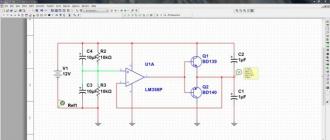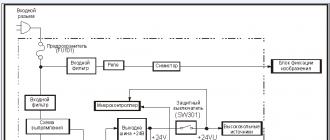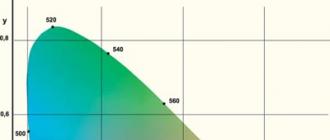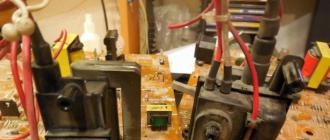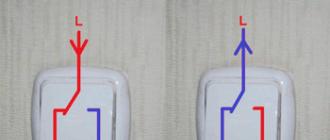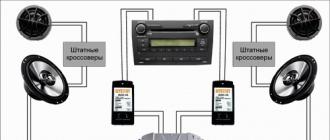When you start the portable device, you saw the service desk completely clean, without a single element, no need to be upset and quickly start reinstalling the OS.
Probably, your friends just decided to play a trick on you - then it will not be difficult to return the icons. But it is possible that a virus has tried here - then you will need to spend some time, although it is equally easy to correct the situation.
If this is a joke, then you will need the below method.
Method 1. Display the icons present on the display.
It is necessary to click the right mouse button on an unoccupied place of the desktop. A list will open in which you should select "arrange icons", and then click on "Show desktop icons".
Icons may not be restored instantly, but after a few seconds, depending on the processing power of the PC. If nothing has changed, you should proceed to the next methods. But before that, do not forget to check the hardware for malware, because as soon as you fix the errors and restart the system, everything can return to its previous form (no icons).
Method 2. Enabling the explorer.exe parameter through the task manager.
The function of this process is to demonstrate all the components of the display. The launch algorithm looks like this:
If the PC indicates that this element was not found, or the complication has not been resolved due to a restart, then you should restore the OS, and for this you need to use the following method.
Method 3. Rollback the operating system.
The item does not have any difficulties in implementation:
- Use Alt + Ctrl + Delete again.
- Go to a separate window, select the "Applications" - "New task" section.
- In the window that appears, click "Create a new task", then specify the path in the text line % SystemRoot% \ system32 \ restore \ rstrui.exe... Click OK. The "System Restore" window will appear on the screen.
If there are no available points, then, most likely, you have disabled the savepoint generation option. Then the next method is worth trying.
Method 4. Correcting registry data.
If neither rolling back nor restarting the PC solved the dilemma, you will need to edit the system data:

If you can use the Internet, you will be able to return the icons using the method below.
Method 5. Using the reg-template.
For this option, you need to perform the following steps:

One of the suggested methods should help you solve the problem with missing icons on the desktop.
Every user Windows organizes your desktop in a certain way, for quick access to popular applications and folders. The arrangement of labels (icons) in groups plays not only an aesthetic, but also a practical role, and when, due to system bugs or careless actions of the user himself, the usual order is violated, for many it becomes a small tragedy. Today I will tell you how to quickly restore the location of shortcuts using the command line or a portable special utility ICU(Icon Configuration Utility).
![]()
Restoring the arrangement of icons on the desktop via cmd.exe
The easiest way to reincarnate the desktop is to use it, provided that you immediately notice the change and do not restart your computer. The point is that the information about the desktop layout is in the registry key HKEY_CURRENT_USER \ Software \ Microsoft \ Windows \ Shell \ Bags \ 1 \ Desktop, and if you close Explorer Windows forcibly, it will not save the data of the new template, but will restore the old one at startup.

Therefore, through the key combination "" open the "Run" window and enter cmd → "OK"→ in the command line, type (copy) taskkill / IM explorer.exe / F → "Enter"(screenshot above).

After the Explorer is finished, start it again by running the command in the console explorer and make sure the icons are back in place.
Important!
If you have lost ALL shortcuts from the desktop, try this: right-click on the free space, select " View"and check that the item" Display desktop icons".
Restoring the location of shortcuts on the desktop using the ICU utility

In order not to wait for problems, it makes sense to write down the desktop configuration in a separate file in advance. The free portable (does not require installation!) Software by the German developer Carsten Funk ( Karsten funk).
Download ICU(Icon Configuration Utility) from my Yandex.Disk, transfer it to the folder of the same name and extract it from the archive. The principle is simple: to create a configuration file in the application window, click the " Save"(" Save ") → in a new window, give it a name →" Save".

Accordingly, to restore the familiar arrangement of shortcuts, activate ICU and, having selected the required config, press " Restore" ("Restore").

Despite the long absence of new versions, the utility supports both Windows 7 and Windows 8 / 10 any bit depth (32-bit / 64-bit).
Important!
If you have deleted some icon (shortcut) of the program and it is not in the "Recycle Bin", find the required launcher EXE-file in directory C: \ Program Files, click on it with the right mouse button and in the drop-down menu through the item " send"select" Desktop (create shortcut)".
Dmitriy dmitry_spb Evdokimov
At some point, the user of the Windows operating system may find that all icons or, as they are also called, shortcuts have disappeared from the computer desktop. There are many possible reasons for this. In this article we will try to figure out how to restore shortcuts to. As a result, four different methods will be presented to fix the problem.
Method 1: how to recover a deleted shortcut?
Perhaps this is the simplest way to restore desktop icons, but it may not be effective in all cases, but only if they were removed directly by the user. So, here's what you need to do for this:
- Open the "Trash". If its shortcut also disappeared from the desktop, then you can do it like this: press Win + R, enter the shell command in the window that appears: RecycleBinFolder, click OK.
- In the window that appears, you should find all the removed shortcuts. Select all the items required for recovery.
- Click the "Restore Selected Objects" button on the top panel.
After that, they should appear again on the desktop. If they are not in the "Trash" folder, then go to the next method, how to restore shortcuts on the desktop.
Method 2: display icons function
It happens that the problem is not, by and large. This happens when the user simply disabled the display of icons on the main screen. It turns out that they all remained in place, they just became invisible. By the way, you can check this by trying to select an area of the desktop by holding LMB and dragging with the mouse. If the selection area does not appear, then this is the reason. In this case, here's what you need to do:
- Right click anywhere on the screen.
- In the menu, move the cursor over the "View" item.
- In the additional menu, select Show Icons.

After that, they should appear. This was the second way how to restore shortcuts on the desktop, and it also cannot always help, so let's move on to the next one.
Method 3: launch explorer.exe
The icons may also be missing due to the termination of the explorer.exe process, which is required to display almost all interface elements. To fix the situation, you need to do the following:
- Open the Task Manager window by pressing Ctrl + Shift + Esc on your keyboard.
- In the window that opens, click the "File" button and click on "New task" in the context menu.
- In the window that appears, enter explorer.exe.
- Click on the OK button.

The process will be launched, respectively, all elements of the desktop, including shortcuts, will be displayed. This method, how to restore a shortcut on the desktop, is also not considered 100% effective, but it is still worth trying.
Method 4: make changes to the registry
Using the previous method, it is not always possible to restore work. In this case, it is necessary to resort to making adjustments to the Windows system registry.
- Open the registry by pressing Win + R and running regedit.
- In the folder tree on the left, open HKEY_LOCAL_MACHINE and go to SOFTWARE.
- In the folder that opens, go to the Microsoft directory and then to WindowsNT.
- In it, open CurrentVersion and then Image File Execution Options.
- Find explorer.exe or iexplorer.exe in the opened directory tree and delete them. To do this, click on the RMB name and select the appropriate item in the menu.

After that, you will need to restart your computer for all changes to take effect. Thus, after starting the desktop, elements that were previously missing should appear on it. So you have learned the fourth method, how to restore program shortcuts. If this did not help you, then there are only two options: check the computer for viruses, perhaps they are preventing the display of icons, or roll back the system before the problem has not appeared yet.
We hope this article helped you troubleshoot problems encountered while working in the Windows operating system. If none of the methods helped, then we recommend that you think about reinstalling the system.
Computer users store on the windows desktop (desktop) those icons, folders and shortcuts that are used every day, and should always be at hand. The disappearance of all of them or only a part of them may be the result of the influence of a virus or other malicious program. Another option is unqualified user actions. These two reasons are the main ones, explaining why all the shortcuts have disappeared from the desktop. Fortunately, the task of how to restore shortcuts on the desktop is within the power of a user with basic computer knowledge.
The lack of shortcuts is inconvenient for the user. You can restore missing shortcuts yourself.
Customizing system icons
After installing windows 7, the system icon "Trash" is already present on the desktop PC. During the initial setup, as a rule, several others are added to it. Almost always this is the Computer icon (in previous versions - My Computer), the folder with the user's files, sometimes the Network and Control Panel icons. How do I restore the shortcut to my computer and others? If shortcuts and folders have disappeared from the desktop, then they can be easily returned by implementing the following sequence of actions.


Why are the shortcuts not displayed on the desktop after these actions? The fact is that the display of Windows desktop icons is included in the functions of a special explorer.exe file that is launched when the computer is turned on along with the system. If the computer is seriously infected, the launch of this file is blocked. In this case, checkmarks may be present next to the components, but the icons will not be displayed. How do I return all shortcuts to the desktop? To solve the problem, you will need to restore the normal launch of the explorer.exe file.
Rollback to the previous state
By default, Windows provides the ability to return (rollback) to the previous state. In the process of work, the current state is periodically remembered, unnoticed by the user. These "snapshots" of the system are called recovery points. If necessary, the entire PC can be returned to the memorized state. If the shortcuts from the desktop have disappeared, then the easiest way to return them is by rolling back to the date when they were normally displayed. This requires a few steps.


IMPORTANT. After that, you need to try not to repeat the actions, otherwise the icons may disappear again or periodically disappear. In particular, you should not ignore browser warnings about the potential dangers of visiting certain sites. You may need to install more advanced antivirus protection.
Unfortunately, on some computers, the very handy rollback function is disabled in order to save disk space. Sometimes this disservice is provided to customers even during the pre-sale of the PC.
Editing Windows Registry
On a PC with the rollback function disabled, for the regular launch of the special explorer.exe file, you will have to edit the Windows registry. It is a huge database with hierarchically grouped parameters and operating system settings.
IMPORTANT. Editing should be done very carefully. If you do something wrong, an inexperienced user can seriously damage the system.
In the Windows registry, you will need to edit the largest of its five sections - HKEY_LOCAL_MACHINE. To do this, you need to perform a number of actions.


After restarting the PC, the icons on the desktop will be restored.
Above, we examined the restoration of shortcuts on the windows 7 desktop. If the shortcuts from the desktop have disappeared not from windows 7, but from other modern versions - 8 and 10, then similar actions should be taken. There are minor differences in the names of the icons. For example, if the shortcuts from the windows 10 desktop have disappeared, then after the recovery the user will see not "My computer", but "This computer".
NastroyVse.ru
Restore desktop shortcuts
All PC users often have problems with using the computer. After downloading various programs and installing them, the shortcut icons changed to a "white sheet". Also, when you double-click on the shortcuts, the programs do not start. How to restore the normal operation of shortcuts in such a situation. To do this, do the following: For the correct display of shortcuts, use special files that are pinned in the properties of shortcuts. And if the shortcut icon has changed to a "white sheet" icon, then these files are somehow damaged. But don't worry. They can be restored quickly and easily.

What OS do you have?
pc-helpp.com
Restore desktop shortcuts
 If you are faced with the problem of restoring shortcuts on the desktop, then this article will help you in this matter and if you follow its instructions, you can quickly solve this problem.
If you are faced with the problem of restoring shortcuts on the desktop, then this article will help you in this matter and if you follow its instructions, you can quickly solve this problem.
The problem looks like this: “I downloaded three programs from the Internet and decided to test them in action. But after installing the second program, suddenly all the shortcuts on the desktop and in the Start menu changed their icons to the icon of a white blank sheet. Shortcuts stopped working - apps won't launch. How do I restore the shortcuts on my desktop? ”.
Let's try to understand in as much detail as possible the possible ways to restore shortcuts.
Restoring the work of shortcuts on the desktop
There are 2 main ways to restore shortcuts:
- Automatic, with the help of a special program.
- Manually through the computer registry.
Automatic shortcut recovery method
The free utility Unassociate File Types is designed specifically for restoring system registry values and, at the same time, restoring the action of shortcuts.
- To do this, download the Unassociate File Types program and launch it.
- After that, in the utility window you need to find “.lnk” - select it and click “Remove file association (User)“

Now you need to be sure to restart your computer. After that, the problem should be resolved.
Restoring the work of shortcuts on the desktop manual mode
In order for the shortcuts to display correctly, certain files of a special type are pinned to their properties. If you have a blank sheet icon instead of a beautiful shortcut icon, then the very files of a special type are corrupted. With the help of this instruction, you should definitely cope with the problem that has arisen.
- Press the key combination "Win + R", then type "regedit" in the command line and press Enter (or "Ok").

- In the window that opens, go through the registry tree: HKEY_CURRENT_USER -> SOFTWARE -> Microsoft -> windows -> CurrentVersion -> Explorer -> FileExts -> .lnk.
- Call the context menu by right-clicking on the UserChoice section (if any). In the menu that opens, select the "Delete" item. Confirm your intention by clicking on the "Yes" button. Close the System Registry window.

Restarting the desktop using the task manager
If, after the steps to restore the desktop shortcuts, it will be faster for you to restart the desktop using the task manager, then you can try to do this using the detailed description of the process.
In order to restart the desktop, read the instructions carefully to the end and copy explorer.exe to the buffer (which will need to be launched as a new task in the manager), so after the process is turned off, the desktop and this instruction with the browser will not be available
In order for the changes made to restore shortcuts to take effect without restarting the computer, and after restarting the desktop, press the key combination “Ctrl + Alt + delete” - the main window of the Task Manager will open. Go to the Processes tab -> find “explorer.exe” among the list of processes -> select it and right-click to terminate the process (or select it, stop using the “End Process” button below) - after which the desktop will disappear along with labels.

- Further in the same window of the Task Manager "" -> click on the file button, select "New task"

- Now enter the command “explorer.exe” -> click on the “OK” button. Thus, we have enabled the desktop.

How to restore the location of shortcuts on the windows 10/8/7 desktop
Each windows user organizes his desktop in a certain way, for quick access to popular applications and folders. The arrangement of labels (icons) in groups plays not only an aesthetic, but also a practical role, and when, due to system bugs or careless actions of the user himself, the usual order is violated, for many it becomes a small tragedy. Today I will tell you how to quickly restore the location of shortcuts using the command line or the portable ICU (Icon Configuration Utility) special utility.
Restoring the arrangement of icons on the desktop via cmd.exe

The easiest way to reincarnate the desktop is to use the command line, provided that you immediately notice the change and do not restart your computer. The fact is that information about the desktop layout is located in the registry key HKEY_CURRENT_USER \ Software \ Microsoft \ windows \ Shell \ Bags \ 1 \ Desktop, and if you close Windows Explorer forcibly, it will not save the data of the new template, but will restore the old one when it starts. Therefore, using the "Win + R" key combination, open the "Run" window and enter cmd → "OK" → in the command line, type (copy) taskkill / IM explorer.exe / F → "Enter" (screenshot above).

Once Explorer has finished running, start it again by running explorer in the console and make sure the icons are back in place.
Note: If you have lost ALL shortcuts from the desktop, try this: right-click on the free space, select "View" in the list and check that the item "Show desktop icons" is checked.
Restoring the location of shortcuts on the desktop using the ICU utility

In order not to wait for problems, it makes sense to write down the desktop configuration in a separate file in advance. The free portable (no installation required!) Software by German developer Karsten Funk will do just fine with this. Download ICU (Icon Configuration Utility) from my Yandex.Disk, transfer it to the folder of the same name and extract it from the archive. The principle is simple: to create a configuration file in the application window, click the "Save" button → in the new window, give it a name → "Save".
Accordingly, to restore the familiar location of the shortcuts, activate the ICU and, having selected the desired config, click "Restore".

Despite the long absence of new versions, the utility supports both windows 7 and windows 8/10 of any bit depth (32-bit / 64-bit).
Note: If you have deleted an icon (shortcut) of the program and it is not in the "Recycle Bin", find the required executable EXE file in the C: \ Program Files directory, right-click on it and in the drop-down menu via the "Send" item select "Desktop (create shortcut)".
Dmitry dmitry_spb Evdokimov
TestSoft.su
Recovering a missing desktop in windows 7
 Keeping your desk neat is very good. All folders are in their places, labels are arranged on a grid, there is nothing superfluous. But sometimes this "order" can appear unexpectedly and frighten the user a lot, especially if all the shortcuts and even the taskbar disappear along with the "Start" button. To fix this problem, it is good to know how to restore the desktop on windows 7.
Keeping your desk neat is very good. All folders are in their places, labels are arranged on a grid, there is nothing superfluous. But sometimes this "order" can appear unexpectedly and frighten the user a lot, especially if all the shortcuts and even the taskbar disappear along with the "Start" button. To fix this problem, it is good to know how to restore the desktop on windows 7.
Launch explorer.exe
You decided to install windows 7, made your wish come true, actively used the system and suddenly, when you turn on the computer again, you saw that instead of your desktop, a blank sheet appears on the screen, not burdened with any shortcuts, gadgets and panels. What to do?

The explorer.exe file launches the windows graphical shell, so after turning it on, the desktop appears on the screen with all the shortcuts and the taskbar. The question arises, why does this system file not start normally? Most likely, some malicious program changed the parameters of its operation, registered in the registry, while the file itself remained working.

To fix this error, perform a system restore, and then be sure to check your computer using an antivirus or a special cleaning utility Dr.Web CureIT.
Important! If you decide to customize windows 7, do not disable System Restore. While creating and storing restore points is resource intensive, it can be extremely rewarding.
Using Safe Mode
If the Windows Task Manager does not open or the desktop is not restored during normal boot, you can try the above steps in Safe Mode.
Restart your computer and press the F8 key (to be sure, press it several times immediately after starting until the mode selection window appears). 
In the vast majority of cases, you will see your home screen with all the shortcuts and panels. You just have to go to the "Start" menu and select "System Restore", which is located in the "Utilities" section. 
If the desktop is empty, go to Task Manager and try again forcibly launching the explorer.exe file.  Alternatively, you can immediately start System Restore by typing the command "rstrui.exe".
Alternatively, you can immediately start System Restore by typing the command "rstrui.exe".
After a normal system startup, be sure to check it for viruses so that you no longer encounter similar problems.
Working with the registry
If the system restore function does not help (or has simply been disabled), you will have to work a little with the registry, checking and, if necessary, correcting some of the entries responsible for starting the windows 7 graphical shell.
- Boot in Safe Mode.
- If there is a Start button, click on it and open the Run menu. Enter the command "regedit" and click "OK".
- If there is no Start button, open Task Manager (Ctrl + Alt + Delete), open the File menu, select New Task and enter the regedit command.
In the registry editor, you need to check several branches. First, go sequentially along the path HKEY_LOCAL_MACHINE -> SOFTWARE -> Microsoft -> windowsNT -> CurrentVersion -> Winlogon.
Check the "shell" parameter - it should be set to "explorer.exe".
As you can see in the screenshot, in this case the value of the parameter is different, therefore, instead of the graphical shell, the system launches a malicious application located in the "temp" directory.
If you launch the Task Manager and carefully read the Processes tab, you can easily find the malicious program found in the registry among other running applications. 
Then check the "userinit" parameter - it should be "C: \ windows \ system32 \ userinit.exe". In the screenshot, you can see that the system is accessing the "temp" folder, launching a malicious application.
To fix these shortcomings, it is necessary to bring the values of the "shell" and "userinit" parameters back to normal. As a result, the records should look like this: 
The next registry key to check is HKEY_CURRENT_USER → Software → Microsoft → windows → CurrentVersion → Policies → Explorer. If you see a "NoDesktop" parameter here with a value of "1", change it to "0" or simply delete it. 
Finally, you can search for the name of the virus that you found in the values of the "shell" and "userinit" parameters.
Press Ctrl + F in the registry editor and start the search by entering the name of the malicious application in the line.
If you find the "shell" parameter on the HKEY_CURRENT_USER → Software → Microsoft → windowsNT → CurrentVersion → Winlogon branch, which will have some path in the value, edit it. By default, the value of the "shell" parameter should be empty. 
Registry repair
In order not to fix the entries manually, you can use the windows 7 registry restore function. If you save the working registry configuration in a special file with the * .reg extension in advance, you can easily return all correct parameters if necessary.
But even if you have disabled system restore and you did not make a copy of the registry, you can use the standard windows tools that allow you to return the entries to their original state.
Every 10 days, the registry is automatically saved as several files that can be found in the "RegBack" folder.

Now you need to delete the registry files from the "Config" directory and copy the backup copies from the "RegBack" directory to their place.  As a result, the registry will take its normal, working form, in which no malicious applications will interfere with the correct display of the desktop.
As a result, the registry will take its normal, working form, in which no malicious applications will interfere with the correct display of the desktop.
Restore system files
Above, we examined the situation when the explorer file itself is not damaged, and the changes are made only to the system registry. However, it also happens that recovery is required by the application itself, which is responsible for starting the shell.
To repair explorer.exe, follow these steps:

A computer scan will start, which will search for and restore system files. An installation disc may be required at this point, so prepare one ahead of time.
However, usually errors with the file explorer.exe are corrected by the system itself, so you just need to wait until the scan is finished, after which you can start checking the registry.
AVZ utility
You can restore system files not only using the built-in windows tools, but also thanks to the AVZ utility. If you cannot start the program with standard two clicks, open the Task Manager and select the New Task item from the File menu. 
Important! In the launch line, you must specify not the name of the utility, but the full path of its storage. For example: C: \ Users \ Username \ Desktop \ avz4 \ avz.exe.
The main program window will open. Expand the "File" menu and select the "Database update" item. 
Wait until the end of the update procedure and click "OK". Open the File menu again and select System Restore. 
Check points 9 and 16 ("Removing debuggers" and "Restoring the startup key") and click "Perform marked operations".  After the AVZ utility has finished working, you need to check the registry and, if necessary, correct the entries, using the instructions above.
After the AVZ utility has finished working, you need to check the registry and, if necessary, correct the entries, using the instructions above.
How do I restore shortcuts on my computer desktop?
Do you want to know how to make stable money on the Internet from 500 rubles a day?
Download my free book
=>>
Have you ever had such a situation when, when you turn on the computer, absolutely all the shortcuts were missing on the desktop?
Agree, the first thing that comes to mind is the thought of what will happen. Accordingly, everything that was installed earlier will also need to be reinstalled.
Of course, this situation is often caused by the activity of viruses, but this is not always the case. Especially if there are small children at home who can click somewhere and accidentally remove shortcuts from the PC desktop.
Also, shortcuts can disappear as a result of incorrect shutdown of Windows, for example, when programs crash and for other reasons. In general, you should not panic or worry too much about this, because everything is fixable.
This article will go into more detail on how to restore shortcuts on the desktop and you will learn what is required for this.
How to restore desktop shortcuts, ways
There are several options for restoring desktop shortcuts:
- Using the registry.
- By activating the icon display functions.
- Via explorer or basket.
- By enabling the task manager.
I think it is worth familiarizing yourself with each of the above methods for solving the problem that has arisen in more detail. But before that, try to start everything through the "Start" menu.
Basket
As you know, when you delete any file or shortcut, it is moved to temporary storage in the "Recycle Bin" and remains there until the user cleans it, or reinstalls the OS.
Thus, the first thing you can try to check is the presence of shortcuts from the desktop in the "Trash". If they are found, to restore, you just need to move the mouse over the desired object and, by clicking on it with the right mouse button, select "Restore" from the context menu.
However, if the necessary objects were not found in the "Recycle Bin", or maybe there is no shortcut to the basket itself, then as an option, you can roll back the system to the date when the shortcuts were still on the desktop.
Activating the icon display function
Another solution to the question of how to restore a shortcut on the desktop is very simple. All that is required is to click on the desktop with the right mouse button and select the "View" line. Here you simply select the function "Display desktop icons".
Also, this issue is resolved through the built-in "Desktop" program. However, it is worth noting such a moment, if there are no desktop icons in the program, then this means that your PC is either infected with a virus.
Or the actions that resulted in the removal of icons cannot be undone through this program. But even in this case, you should not despair, just the problem that has arisen will need to be solved in another way.
Task Manager
If all the icons disappear from your computer desktop, you can also try launching the Task Manager. To do this, you need to simultaneously hold down three keys "Ctrl + Alt + Delete".
You can right-click the bottom panel of the screen, where the "Start" menu, time and other additional icons are located. From the context menu that opens, select "Task Manager".
Both options will lead to its opening. In the task manager you need to go to the "File" tab and select "New task (Run)". In the window that appears, enter "explorer.exe" and click on "OK".
This way you will be able to start your desktop as normal. If this does not work, then the file is either damaged, or there is a virus on the PC.
Using the registry
To fix the situation with the absence of icons on the desktop using the registry, you will need to do the following:
- To get started, run the search box called "Run". This is done by simultaneously pressing the "Win (flag key) + R" keys and enter the word "regedit" using Latin letters. This will open the registry.
- Then in the registry find the line "HKEY_LOCAL_MACHINE" and in it go to "SOFTWARE".
- Next, sequentially open "Microsoft", "Windows NT", "CurrentVersion", "Image File Execution Options". On the right side, various entries will be displayed, if there is a line with the entry "exe" or "iexplorer.exe" among them, delete them.
- Then, using the path "HKEY_LOCAL_MACHINE", "SOFTWARE", "Microsoft", "Windows NT", "CurrentVersion", "Winlogon", when opening the last folder, find the entry on the right side with the word "Shell", in the column the value should be " explorer.exe ". If there is no such record, then you need to create it and click on "OK", after which you need to reboot the PC.
How to recover missing shortcuts from the desktop, the result
Thus, solving the problem of recovering missing desktop shortcuts is not difficult. So when this situation arises, do not rush to reinstall the operating system.
Try one of the above methods to get started.
I bring to your attention a few more useful articles:
P.S. I am attaching a screenshot of my earnings in affiliate programs. And I remind you that everyone can make money, even a beginner! The main thing is to do it correctly, which means to learn from those who are already earning money, that is, from the professionals of the Internet business.
Collect the list of verified Affiliate Programs 2017 that pay money!
Download the checklist and valuable bonuses for free
=>>



